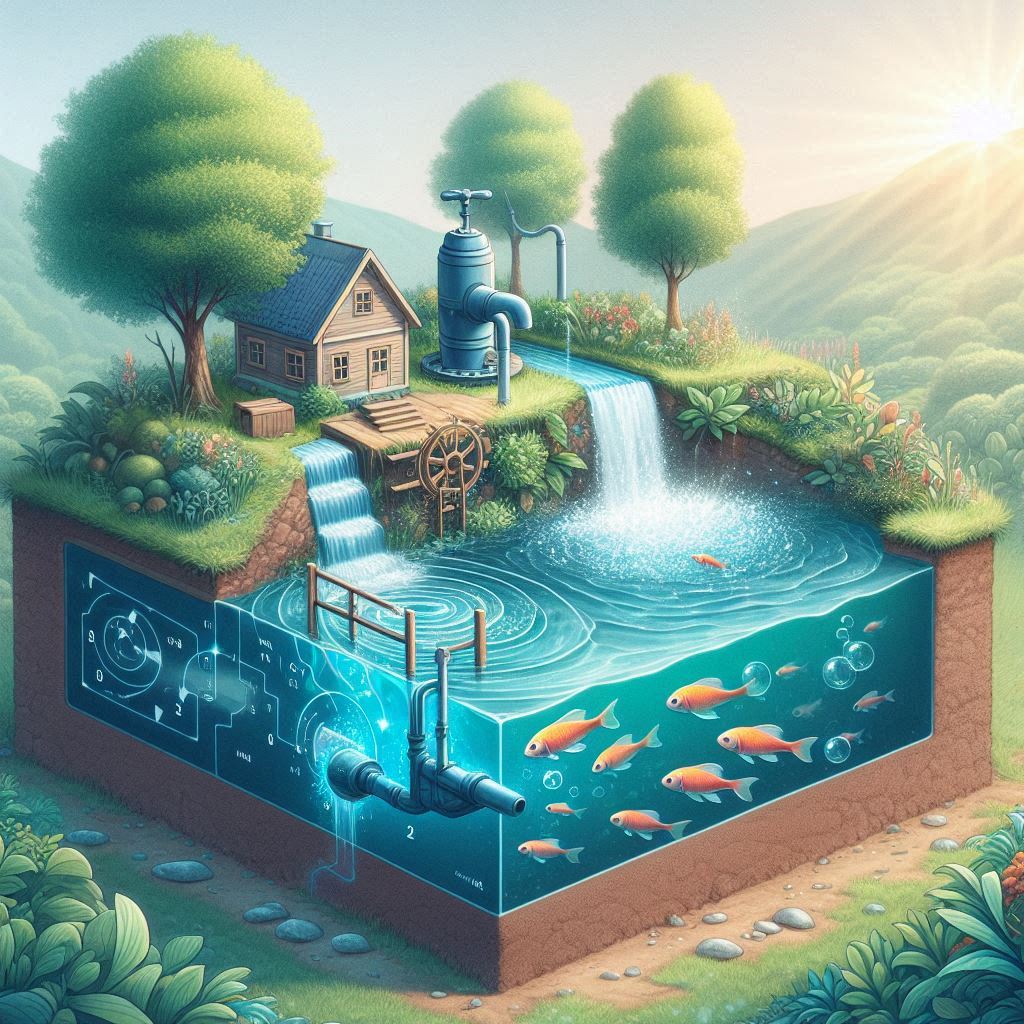How to Calculate and Select the Right Pump for Your Fish Pond or Fountain

When it comes to maintaining a healthy and vibrant fish pond or creating a stunning fountain display, selecting the right pump is crucial. But with so many options available, how do you determine which pump is best suited for your specific needs? In this article, we'll explore the key calculations and considerations to help you make an informed decision.
Key Factors in Pump Selection
- Flow Rate: The volume of water the pump can move per hour.
- Head Height: The vertical distance from the pump to the water's surface or highest point of your water feature.
- Pond Volume: The total amount of water in your pond.
- Desired Turnover Rate: How often you want all the water in your pond to circulate through the pump.
Calculations for Pump Selection
1. Calculate Pond Volume
First, determine the volume of your pond:
For rectangular ponds: Length x Width x Average Depth
For circular ponds: π x Radius² x Average Depth
Example:
For a rectangular pond long, wide, and deep on average:
Volume .
2. Determine Desired Turnover Rate
For most ponds, turning over the entire volume once every 1-2 hours is recommended.
Example:
For our pond, we'll aim for a turnover. Required Flow Rate is:
3. Calculate Head Height
Measure the vertical distance from the pump location to the highest point water needs to reach.
Example:
If the pump is at the bottom of a deep pond, and the waterfall is above the pond surface, Total Head Height is:
4. Account for Head Height in Flow Rate
Pumps lose efficiency as head height increases. As a rule of thumb, add 10% to your required flow rate for every foot of head height.
Example:
Additional flow needed: ,
where i is the rate of change in height: .
Total Required Flow Rate: =
5. Consider Plumbing Losses
Friction in pipes and fittings can reduce flow. Add an additional 10-15% to your flow rate to compensate.
Example:
Final Required Flow Rate:
Additional Consideration: Using the Pump for Yard Watering
When selecting a pump for your pond, you may want to consider its potential dual use for yard watering during water changes. This additional function can affect your pump selection criteria. Let's add this to our calculations:
6. Calculate Flow Rate and Head for Yard Watering
When using a typical ID (inner diameter) garden hose for watering, we need to consider:
- The length of the hose (in this case, )
- The elevation difference between the pond and the watering area
- Desired flow rate for effective watering
For a hose, a good target flow rate is around - .
To calculate the additional head loss due to the hose:
Friction loss in the hose (approximate):
- For a hose at , friction loss is about 3.5% of hose length.
- For : .
Add any elevation difference (let's assume for this example)
Total additional head = Friction loss + Elevation difference
We got:
Revising Our Pump Selection
Now, we need a pump that can handle both scenarios:
- Normal pond circulation: at head (from our previous calculation)
- Yard watering: - at head ( pond depth + additional head)
To accommodate both uses, select a pump that can deliver:
- At least at head for normal operation
- At least at head for yard watering
Many pond pumps provide performance curves or tables. Look for a pump that meets or exceeds both these requirements.
Conclusion
Selecting the right pump for your fish pond or fountain involves careful consideration of multiple factors. As we've explored, the key calculations include:
- Determining your pond's volume
- Calculating the desired turnover rate
- Measuring the head height
- Accounting for flow rate losses due to head height and plumbing
- Considering additional uses, such as yard watering
By following these calculations, you can determine the minimum requirements for your pump. In our example, we found that we needed a pump that could handle:
- At least at head for normal pond circulation
- At least at head for yard watering (when applicable)
When selecting your pump, always choose one that slightly exceeds your calculated needs to ensure optimal performance. Look for pumps with performance curves or tables that meet or exceed both these requirements.
Remember that while these calculations provide a solid starting point, other factors may influence your final decision:
- Energy efficiency
- Noise levels
- Durability and longevity
- Ease of maintenance
- Specific water feature requirements (e.g., for fountains or waterfalls)
- Filtration needs
Considering additional uses like yard watering can lead to a more versatile and cost-effective solution, eliminating the need for separate pumps for different tasks.
For complex setups, large ponds, or if you're unsure about the calculations, don't hesitate to consult with a pond professional or pump specialist. They can help ensure you select the perfect pump for your aquatic paradise, taking into account all your specific needs and conditions.
By taking the time to properly calculate and select the right pump, you're investing in the health and beauty of your pond or water feature, as well as potentially enhancing your overall landscaping capabilities.
#PondManagement #LandscapingTips #WaterFeatures #DIYGardening #WaterConservation #SmartGardening #LiveCalcArticle(LCA)
